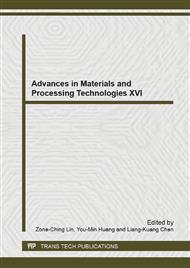p.415
p.422
p.430
p.437
p.445
p.451
p.459
p.465
p.473
A New Approach to Calibration of Printed Circuit Board Coordinates: 2D-Depth Sensor Applied to Robotic Screwdrivers Assembly Systems
Abstract:
We consider the parts screwing problems, which of automatic assembly robotic screwdrivers system required precisely depth and tilt-angle at each insertion point. However, commonly computer vision inspection tools which obtain tilt-angle on clamping printed circuit board is a challenging problem. Further, even if given a depth senor, that still to consider inspection target size. Thus, we present an approach for screwing angle measurement of printed circuit board assembly in Consumer electronics production lines. The methods involved using 2D-Depth sensor to identify screwing angle, and measuring depth information near the hole of printed circuit board. Our method successfully conform to screwdrivers system requirement, tilt angle under three degree and sampling small area target under 10mm^2,which obtains measurement results will be applied to refer on robotic positioning and assembling.
Info:
Periodical:
Pages:
445-450
Citation:
Online since:
May 2014
Authors:
Price:
Сopyright:
© 2014 Trans Tech Publications Ltd. All Rights Reserved
Share:
Citation:


